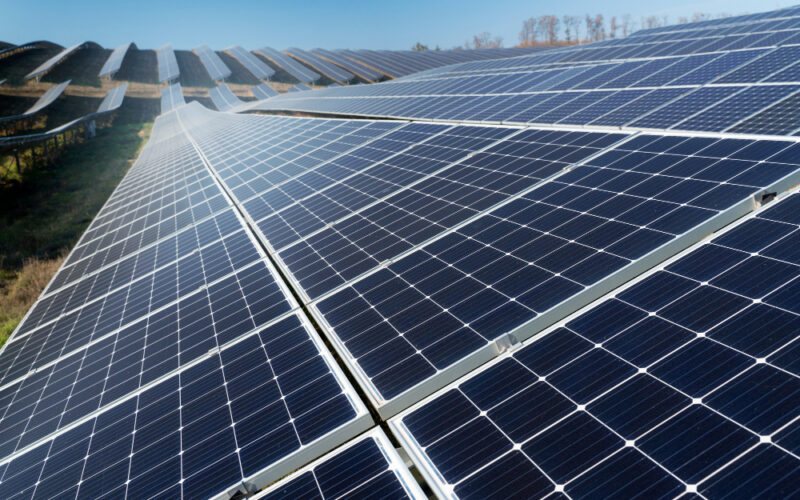What is solar energy?
Solar power converts energy from the sun into thermal and electrical energy. Solar energy is the cleanest and most plentiful renewable energy source, and the United States has the greatest abundance of solar energy resources in the world. Solar energy can be utilized to generate electricity, provide lighting and a comfortable interior atmosphere, and heat water for residential, commercial, and industrial applications (SEIA, 2022).
How does solar energy work?
Solar energy is difficult to convert into electricity. Photovoltaic materials enable this. Photovoltaic materials can absorb photons, the fundamental units of light, and then convert them back into electricity. Edmund Becquerel discovered the photovoltaic phenomenon while researching electrolytic cells in 1839 (Strickland, 2010).
Solar panel efficiency
The amount of sunlight (irradiation) that hits the surface of a solar panel and is converted into electricity is called the solar panel’s efficiency. Recent advances in photovoltaic technology have increased the average conversion efficiency of panels from 15% to well above 21%. This significant increase in efficiency has led to an increase in the rated output of standard-size panels from 250W to over 400W (Most efficient solar panels — Clean Energy Reviews, 2019).
Can solar energy power an entire house?
The U.S. Solar Technology Office says that “the amount of sunlight that hits the earth’s surface in one and a half hours is enough to be able to handle the entire world’s annual consumption.” The sun, which supplies the earth with an enormous amount of energy almost every hour, can power an entire house (Sperling, 2023).
The dark side of solar power
The industry’s current recycling capacity is completely inadequate for the deluge of waste that will be generated. In solar PV, the financial investment incentive to recycle has never been stronger. While panels contain small amounts of silver and other valuable materials, most are made of glass, an extraordinarily low-value substance. Photovoltaic cells’ extended lifespan also limits innovation in this industry. As a result, the surge in PV production has left recycling infrastructure in the dust. In addition, First Solar is the only panel producer in the United States with a recycling program, and its products are produced at a rate of 2 million panels per year. A single panel is anticipated to cost $20 to $30 to recycle at current capacity. The same panel costs only $1–2 to send to a landfill (Atasu, Duran, and Van Wassenhove, 2021).
References
Atasu, A., Duran, S. and Van Wassenhove, L.N. (2021). The Dark Side of Solar Power. Harvard Business Review. [online] 18 Jun. Available at: https://hbr.org/2021/06/the-dark-side-of-solar-power [Accessed 29 January 2023]
Most efficient solar panels — Clean Energy Reviews (2019). CLEAN ENERGY REVIEWS. [online] CLEAN ENERGY REVIEWS. Available at: https://www.cleanenergyreviews.info/blog/most-efficient-solar-panels [Accessed 28 January 2023]
SEIA (2022). About Solar Energy | SEIA. [online] SEIA. Available at: https://www.seia.org/initiatives/about-solar-energy [Accessed 22 January 2023]
Sperling (2023). Fact vs Myth: Can Solar Energy Really Power an Entire House? [2023 Update]. [online] Bluesel Home Solar. Available at: https://www.bluesel.com/blog/fact-vs-myth-can-solar-energy-really-power-an-entire-house/ [Accessed 28 January 2023]
Strickland, J. (2010). Can solar energy power everyday objects efficiently? [online] HowStuffWorks. Available at: https://science.howstuffworks.com/science-vs-myth/everyday-myths/can-solar-energy-power-everyday-objects-efficiently.htm [Accessed 22 January 2023]
